Nate and I have taken to watching Australian Master Chef every night while we eat dinner. This recipe was stolen from the Kylie Kwong, a guest chef on that show! It combines soft and succulent eggplant with a spicy, sweet and salty chili sauce, fresh cilantro, spring onions and is topped with roasted salt and pepper!
The first step is to slice your eggplant (2 regular or four Japanese). Make sure the pieces are a similar size. Then, salt the eggplant and leave for half and hour. Salting removes the bitter tanic juices and some of the water from the eggplant. After the salt has done its work, rinse the eggplant and pat it dry--making sure to press out as much water as possible.
The first step is to slice your eggplant (2 regular or four Japanese). Make sure the pieces are a similar size. Then, salt the eggplant and leave for half and hour. Salting removes the bitter tanic juices and some of the water from the eggplant. After the salt has done its work, rinse the eggplant and pat it dry--making sure to press out as much water as possible.
While your eggplant is resting, make the chili sauce. It calls for 10 cloves of garlic and six minced red chilis (these chilis are more sweet than spicy)!!!
Saute the minced chili, garlic and a nice knob of minced ginger in a pan with about 6 Tbs. of peanut oil (if you don't have peanut oil, you can use vegetable oil with a couple of dashes of sesame oil). Cook the mixture on low until it is jammy in consistency. Remove from the heat and add 2 teaspoons of soy sauce or tamari.
Next, cook your eggplant in a fry pan with a few Tbs. of piping hot peanut oil (or veg with sesame). You want it to brown off and cook through. I made the unfortunate mistake of consulting the Master Chef program while my eggplant was cooking--beware it burns quite quickly!
Dice about five spring onions and a bunch of cilantro (stems and leaves).
Add the chili sauce to the cooked eggplant and remove the mixture from the heat.
Toss the eggplant and chili sauce mixture with the green onions and the cilantro. Sprinkle with a little roasted salt and pepper. See below for roasting instructions.
Roast salt and (Schechuan) peppercorns by agitating in a pan over medium heat until the peppercorns burst. It is ready when the salt turns ashen in colour. Then use a mortar and pestle to grind the mixture to a fine powder.
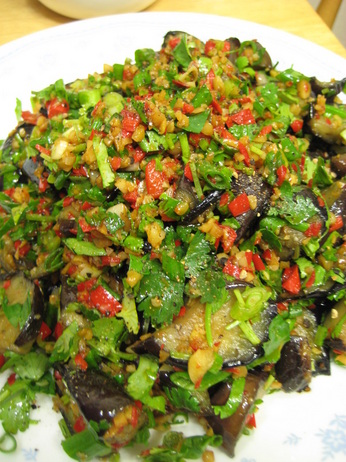
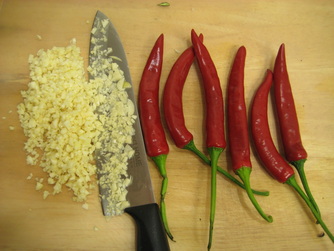
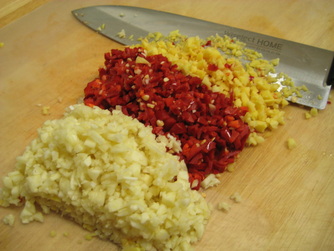
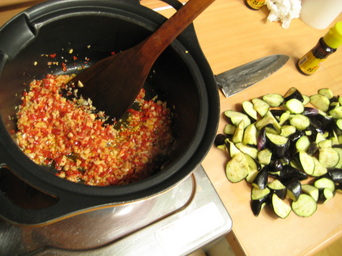
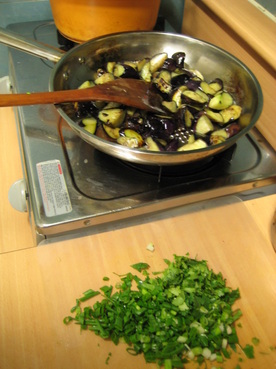
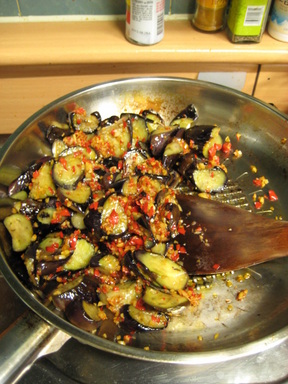
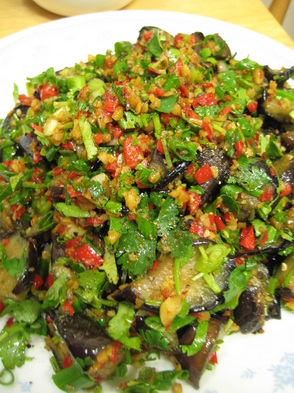
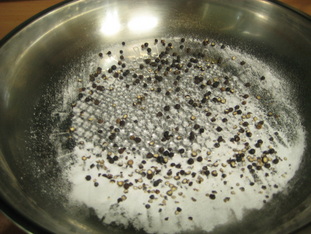
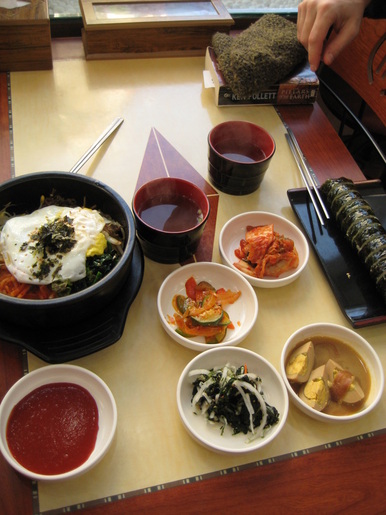
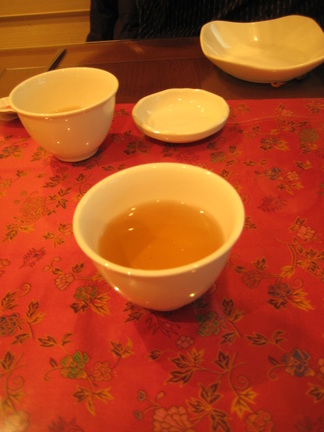
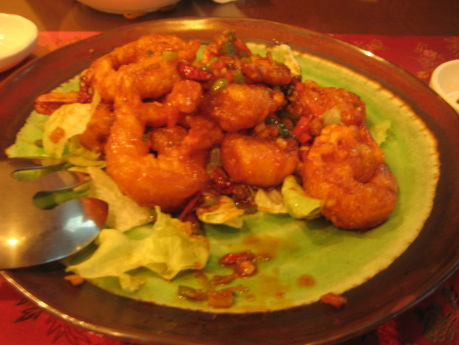
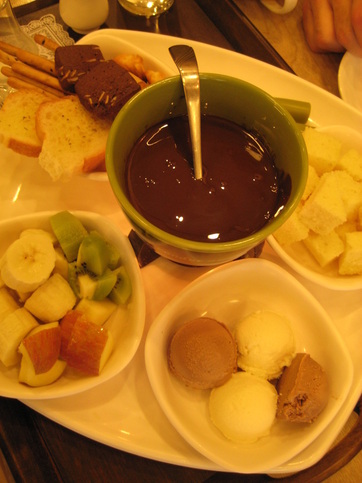
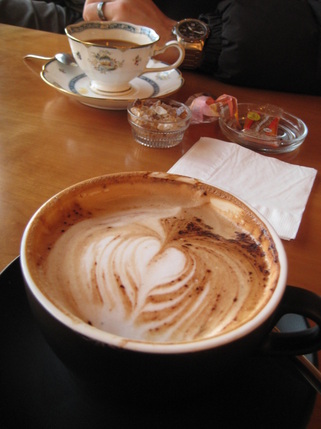
 RSS Feed
RSS Feed